#klamath river
Text
If you aren't following the news here in the Pacific Northwest, this is a very, very big deal. Our native salmon numbers have been plummeting over the past century and change. First it was due to overfishing by commercial canneries, then the dams went in and slowed the rivers down and blocked the salmons' migratory paths. More recently climate change is warming the water even more than the slower river flows have, and salmon can easily die of overheating in temperatures we would consider comfortable.
Removing the dams will allow the Klamath River and its tributaries to return to their natural states, making them more hospitable to salmon and other native wildlife (the reservoirs created by the dams were full of non-native fish stocked there over the years.) Not only will this help the salmon thrive, but it makes the entire ecosystem in the region more resilient. The nutrients that salmon bring back from their years in the ocean, stored within their flesh and bones, works its way through the surrounding forest and can be traced in plants several miles from the river.
This is also a victory for the Yurok, Karuk, and other indigenous people who have relied on the Klamath for many generations. The salmon aren't just a crucial source of food, but also deeply ingrained in indigenous cultures. It's a small step toward righting one of the many wrongs that indigenous people in the Americas have suffered for centuries.
#salmon#dam removal#fish#animals#wildlife#dams#Klamath River#Klamath dams#restoration ecology#indigenous rights#Yurok Tribe#Karuk Tribe#nature#ecology#environment#conservation#PNW#Pacific Northwest
12K notes
·
View notes
Text
The Klamath River’s salmon population has declined due to myriad factors, but the biggest culprit is believed to be a series of dams built along the river from 1918 to 1962, cutting off fish migration routes.
Now, after decades of Indigenous advocacy, four of the structures are being demolished as part of the largest dam removal project in United States history. In November, crews finished removing the first of the four dams as part of a push to restore 644 kilometres (400 miles) of fish habitat.
“Dam removal is the largest single step that we can take to restore the Klamath River ecosystem,” [Barry McCovey, a member of the Yurok Tribe and director of tribal fisheries,] told Al Jazeera. “We’re going to see benefits to the ecosystem and then, in turn, to the fishery for decades and decades to come.” ...
A ‘watershed moment’
Four years later, [after a catastrophic fish die-off in 2002,] in 2006, the licence for the hydroelectric dams expired. That created an opportunity, according to Mark Bransom, CEO of the Klamath River Renewal Corporation (KRRC), a nonprofit founded to oversee the dam removals.
Standards for protecting fisheries had increased since the initial license was issued, and the utility company responsible for the dams faced a choice. It could either upgrade the dams at an economic loss or enter into a settlement agreement that would allow it to operate the dams until they could be demolished.
“A big driver was the economics — knowing that they would have to modify these facilities to bring them up to modern environmental standards,” Bransom explained. “And the economics just didn’t pencil out.”
The utility company chose the settlement. In 2016, the KRRC was created to work with the state governments of California and Oregon to demolish the dams.
Final approval for the deal came in 2022, in what Bransom remembers as a “watershed moment”.
Regulators at the Federal Energy Regulatory Commission (FERC) voted unanimously to tear down the dams, citing the benefit to the environment as well as to Indigenous tribes...
Tears of joy
Destruction of the first dam — the smallest, known as Copco 2 — began in June, with heavy machinery like excavators tearing down its concrete walls.
[Amy Cordalis, a Yurok Tribe member, fisherwoman and lawyer for the tribe,] was present for the start of the destruction. Bransom had invited her and fellow KRRC board members to visit the bend in the Klamath River where Copco 2 was being removed. She remembers taking his hand as they walked along a gravel ridge towards the water, a vein of blue nestled amid rolling hills.
“And then, there it was,” Cordalis said. “Or there it wasn’t. The dam was gone.”
For the first time in a century, water flowed freely through that area of the river. Cordalis felt like she was seeing her homelands restored.
Tears of joy began to roll down her cheeks. “I just cried so hard because it was so beautiful.”
The experience was also “profound” for Bransom. “It really was literally a jolt of energy that flowed through us,” he said, calling the visit “perhaps one of the most touching, most moving moments in my entire life”.
Demolition on Copco 2 was completed in November, with work starting on the other three dams. The entire project is scheduled to wrap in late 2024.
[A resilient river]
But experts like McCovey say major hurdles remain to restoring the river’s historic salmon population.
Climate change is warming the water. Wildfires and flash floods are contaminating the river with debris. And tiny particles from rubber vehicle tires are washing off roadways and into waterways, where their chemicals can kill fish within hours.
McCovey, however, is optimistic that the dam demolitions will help the river become more resilient.
“Dam removal is one of the best things we can do to help the Klamath basin be ready to handle climate change,” McCovey explained. He added that the river’s uninterrupted flow will also help flush out sediment and improve water quality.
The removal project is not the solution to all the river’s woes, but McCovey believes it’s a start — a step towards rebuilding the reciprocal relationship between the waterway and the Indigenous people who rely on it.
“We do a little bit of work, and then we start to see more salmon, and then maybe we get to eat more salmon, and that starts to help our people heal a little bit,” McCovey said. “And once we start healing, then we’re in a place where we can start to help the ecosystem a little bit more.”"
-via Al Jazeera, December 4, 2023
#indigenous#river#riverine#ecosystem#ecosystem restoration#klamath#klamath river#oregon#california#yurok#fishing#fisheries#nature is healing#literally this time lol#united states#dam removal#climate change#conservation#sustainability#salmon#salmon run#water quality#good news#hope#rewilding#ecology#environment
5K notes
·
View notes
Text
Largest Dam Removal in History Begins Restoring Salmon and California Tribal Way of Life https://www.goodnewsnetwork.org/salmon-run-to-return-on-klamath-river-in-california-as-dam-removal-begins/
246 notes
·
View notes
Text
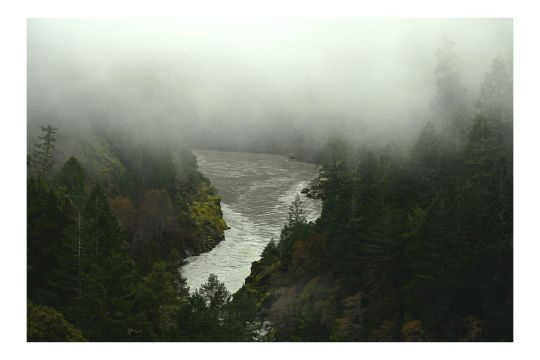


Trinity River along highway 96, before it's meeting with the Klamath
Weitchepec, California
#trinity river#klamath river#waters#yurok land#douglas fir#tanoak#coast live oak#bigleaf maple#west coast#forest#rainy day#fog#mist#mountains#landscape#naturecore#humboldt county#pacific northwest#pnw vibes#pnwonderland#landscape photography#pnw photography#nature photography#original photographers#nikon
23 notes
·
View notes
Text

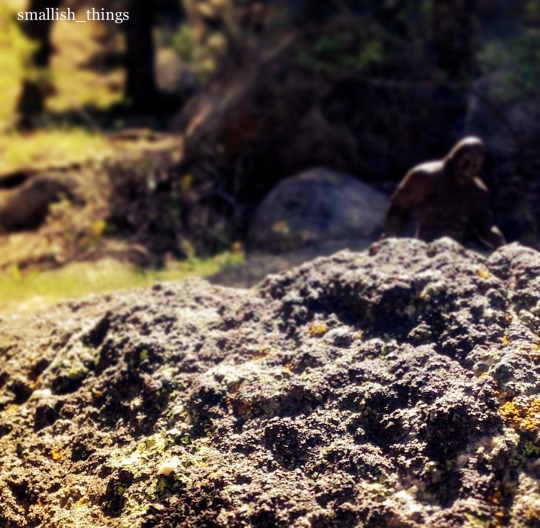

Sightings (2016)
O scale (1:48)
From top: Klamath River, California - 1969; Oroville, California - 1969; Okanogan-Wenatchee National Forest, Oregon - 1960
Shot while traveling through the Sierras, this was one of the rare times I’ve shot outside. The challenge was attempting to visually scale the scenery down. The backgrounds all needed to be kept vague as did the figure, but I needed to focus on something. Twigs and leaves don’t scale, but the texture of rocks can sometimes scale pretty well, so I set the figure with rocks in the foreground. Framing the shots was interesting in that I kept centering the figure, but when I got home and started processing them something felt off. It wasn’t until I cropped them off-center that they started feeling more realistic and gave them a better sense of movement.
Each of the shots is titled after a well-known location or sighting.
#paranormal#smallish_things#miniatures#photography#bigfoot#sasquatch#o scale#oroville#klamath river#okanogan wenatchee national forest#sightings#cryptids#cryptozoology#my photos
16 notes
·
View notes
Text
Water Is Freely Flowing Down The Klamath River For First Time In 100 Years | IFLScience
3 notes
·
View notes
Link
Excerpt from this story from the New York Times:
As a deadly fire continued to burn last week in the Klamath National Forest in Northern California, Kenneth Brink, a local fisherman, counted dead fish in a river that had turned to the consistency of “chocolate milk.”
Mr. Brink, 45, a member of the Karuk Tribe, lives in Happy Camp, a town of less than 900 people on the Klamath River, in Siskiyou County, Calif. The town is near the border with Oregon. On Friday, he drove about 20 miles upstream, where he made the grim discovery: thousands of dead suckerfish, salmon and trout, many floating belly up.
The McKinney fire began on July 29 and has exploded to more than 60,000 acres, killing four people and becoming California’s largest fire so far this year. According to local tribal leaders, the fire has also led to the mass fish kill in the Klamath River, which runs for more than 250 miles from southern Oregon, through Northern California and out to the Pacific Ocean.
Up to three inches of rain fell on areas burned by the fire on Tuesday, sending a debris flow of burned soil, rocks and downed timber into the river, said Mike Lindbery, a public information officer for the McKinney fire.
That debris turned into a plume of brown “sludge” that made its way downriver, according to tribal representatives. A water quality monitoring station on the river recorded the dissolved oxygen level in the water at zero for both Wednesday and Thursday, they added. Sea creatures usually survive in water that has about eight milligrams of oxygen per liter, but the oxygen level in that section of the river made it impossible for the fish to survive.
Mr. Brink, the fisherman, noted that all of the fish that were killed hold cultural importance for the local tribes that live near the river. He said that he felt frustration over the region’s history of forest management, which had in the past prohibited local tribes from conducting cultural burns to tame the landscape.
19 notes
·
View notes
Text

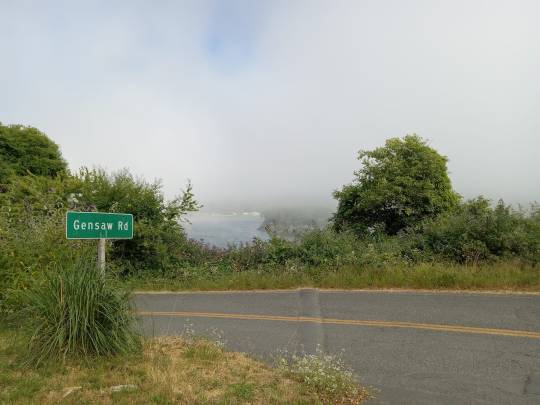
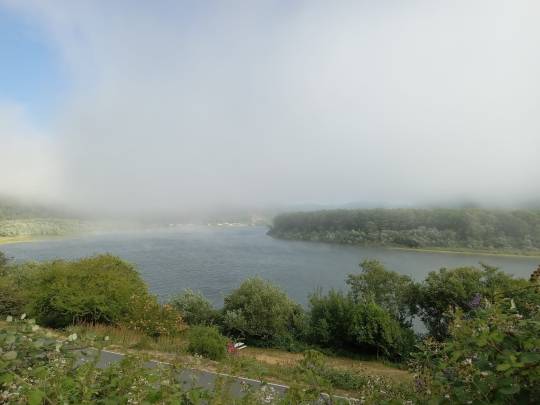


Beautiful day for goodbyes on the rez
#me#california#love#family#nesting partner#cousins#goodbye#coastal native#yurok#klamath river#view from home
2 notes
·
View notes
Link
2 notes
·
View notes
Text

The Seiad Valley Pancake Challenge remains one of the PCT traditions. Five humongous pancakes eaten in two hours and they are free.
Seiad Valley is a tiny trail town in Northern California along the Klamath River wedged between the Marble Mountains and the Siskiyous. The focal point is the Seiad Valley Store and Cafe which has, for years, been home to the challenge.
I wrote my own tale of trying the Pancake Challenge in The Pacific Crest Trailside Reader: California (2011). [Here I am gearing up long ago.]

1 note
·
View note
Text
The Klamath River is Free Flowing for the First Time in 100 years
Dams and hydropower are a key part of renewable energy in many parts of the world. But many rivers have seen major degradation of their environment due to rivers being dammed. Recently, the largest US dam removal project took place, allowing the 257-mile Klamath river in Oregon and norther California to flow freely.
The removal of four dams from the Klamath River, which spans parts of Oregon and…

View On WordPress
0 notes
Link
“Tribal nations and Native people are celebrating a decision made Thursday by federal regulators approving a plan for the largest dam removal plan in the country’s history.
The move is considered a crucial step in saving dwindling salmon populations but also as a sign the federal government is serious about respecting treaty rights and Indigenous culture...
The Federal Energy Regulatory Commission on Thursday voted unanimously to transfer ownership of four dams owned by utility company PacificCorp on the Klamath River in northern California and southern Oregon to the two states and a nonprofit formed to manage the project. The commission called the decision “historic” and “momentous” because tribal advocacy influenced the outcome. Some hope this might lead to greater consideration of treaty rights and Native culture in federal permitting decisions around power generation and dams.
The decision is expected to allow the decommission and destruction of the dams and open up hundreds of miles of a river that once was one of the richest salmon rivers in the U.S. Since the four dams were built between 1918 and 1962, salmon have been blocked from reaching spawning areas, contributing to a drastic decline in the number of salmon in the river...
“The Klamath salmon are coming home,” Yurok Chairman Joseph James said in a statement after the vote. “The people have earned this victory and with it, we carry on our sacred duty to the fish that have sustained our people since the beginning of time.”...
Dam removal is expected as soon as next year and wrap up by the end of 2024.” -via Indian Country Today
#california#oregon#klamath river#native american#indigenous#conservation#salmon#first nations#good news#hope
4K notes
·
View notes
Text
#good news#science#nature#environmentalism#environment#dam removal#klamath river#native plants#indigenous#conservation#restoration
49 notes
·
View notes
Text
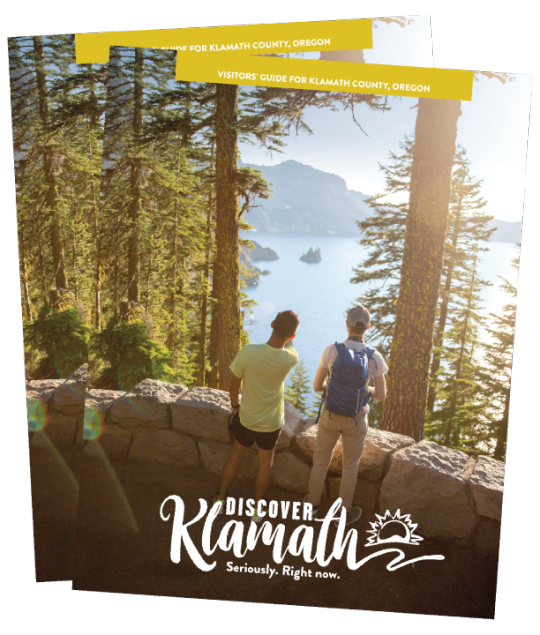
Love Travel? Here Are 5 Reasons to Visit Klamath County Today
With sun-kissed, glittery blue waters, a sprawling expanse of greenery and picturesque 20th century charm, Klamath County has something for everyone! Whether you like to ski, fish, hike or bike—or just soak up the scenic beauty of this region—you’ll find plenty to do and see in Klamath.
Filled with wanderlust? Here are a few reasons why you cannot miss a trip to Oregon’s hidden wonderland:
Plenty Of Outdoor Activities To Get Your Blood Pumping In Klamath County.
Klamath County is full of amazing outdoor activities for you to enjoy. Whether you're looking for hiking, biking, fishing, boating or something else entirely, there are plenty of opportunities in the area to get your blood pumping and explore some new places!
Breathtaking Natural Vistas
From the crystal-clear waters of Crater Lake to the picture-perfect stretch of the Volcanic Legacy Scenic Byway, there’s no shortage of places in Klamath County that are guaranteed to take your breath away. Whether you’re looking for a quiet place to enjoy the scenery, or want to get your adrenaline pumping on some of the best mountain biking trails in Oregon, there are plenty of options for you here!
A Birders Paradise With Over 350 Species To Be Found
High-elevation valleys surrounding mountains make Klamath a prime location for birding year-round. Plus, if you visit the Bear Valley refuge in winter, you might even see scores of Bald Eagles flying above your head!
A Photographer's Dream Location In Oregon!
Klamath County also has some spectacular natural beauty to offer photographers: waterfronts with dramatic views; rugged lava beds; forested areas filled with Ponderosa pines…the list goes on!
Klamath County Is Steeped In History At Every Step
Klamath Falls is home to thousands of years of Native American history and hundreds of years' worth of westward colonization. It's incredibly easy to experience this living history first-hand! From rock art at Lava Beds State Park to the historic buildings of downtown Klamath Falls, there is a wealth of history waiting for you!
Why wait? Start exploring the wonders of Klamath right away!
0 notes
Text
Battle Belongs
Shaken, Jehoshaphat prayed. He went to God for help… 2 Chronicles 20
What a week it has been!
There is nothing quite like facing the dragon of wildfire, and realizing just how helpless you are to do ANYTHING but fall to your knees, and, with the Word of God to stand on?
Boldly ask The Mighty God for miracle upon miracle!
That is exactly what my week has been:
Praying for our courageous…

View On WordPress
0 notes